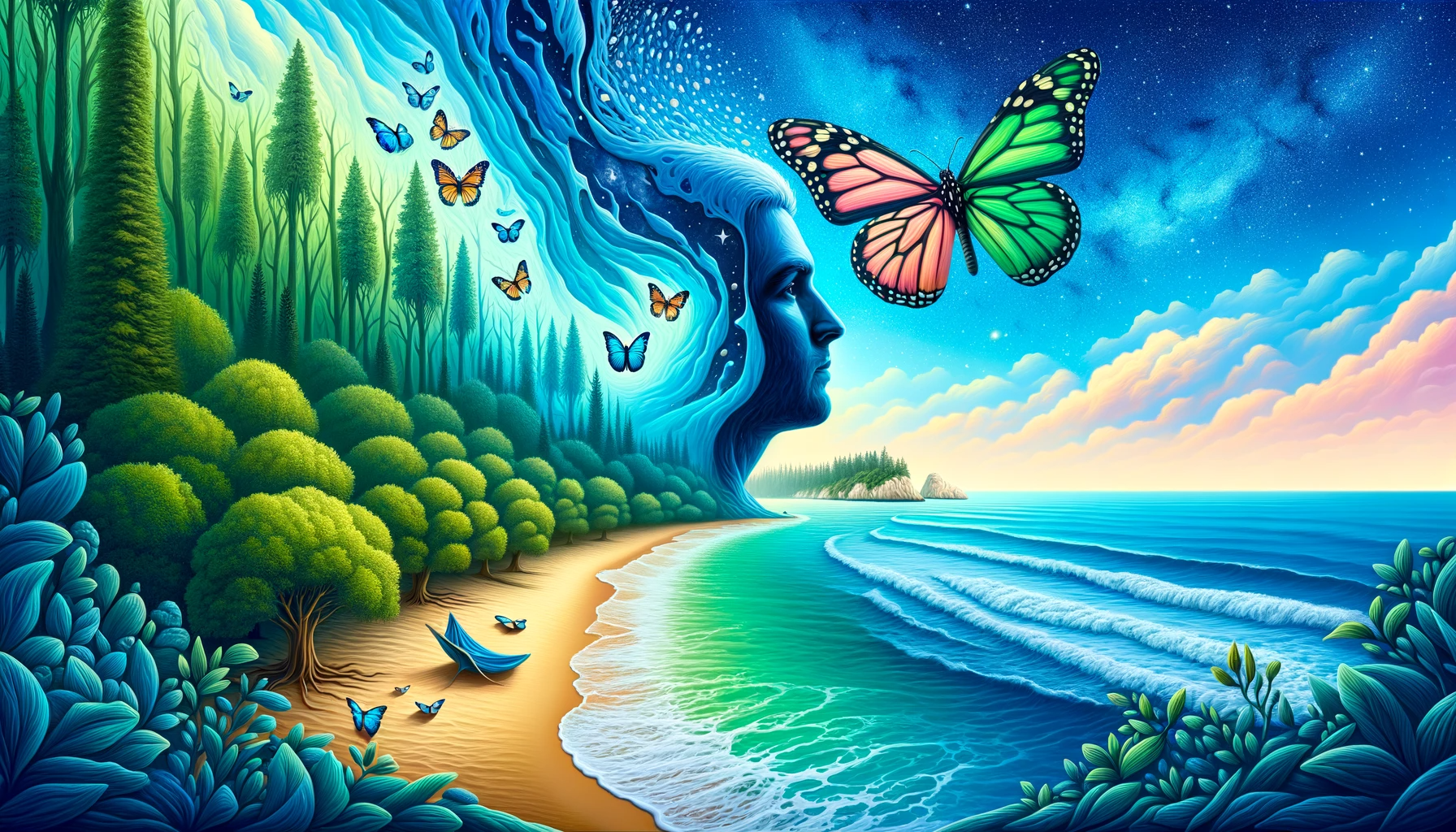5 Easy and Effective Relaxation Techniques for Anxiety Relief in Minutes
Anxiety, a term we’ve all heard and a feeling we’ve all experienced. It’s that unsettling flutter in the stomach, the rapid heartbeat, and the pervasive thoughts that seem to swirl endlessly in our minds. But what exactly is anxiety, and why does it wield such power over our well-being?
Anxiety, in its essence, is our body’s natural response to stress, a kind of alarm system that gets triggered when we feel threatened or under pressure. It’s a universal experience, yet its impacts can range vastly from one individual to the next. For some, anxiety is a fleeting moment of unease, while for others, it’s a relentless wave, impacting every facet of their lives.
Understanding and managing anxiety becomes pivotal, not just for our mental health, but for our overall quality of life. The impact of unchecked anxiety can permeate through our work, relationships, and even our physical health. It’s not merely about quelling the storm but navigating through it with adeptness and resilience.
In the forthcoming sections, we’ll delve into “Relaxation Techniques for Anxiety”, exploring easy and effective strategies designed to offer a sanctuary amidst the chaos. From mindful breathing to progressive muscle relaxation, we’ll navigate through each technique, offering you a guide to reclaiming tranquility, even in anxiety’s tumultuous tide.
The Importance of Relaxation Techniques for Anxiety
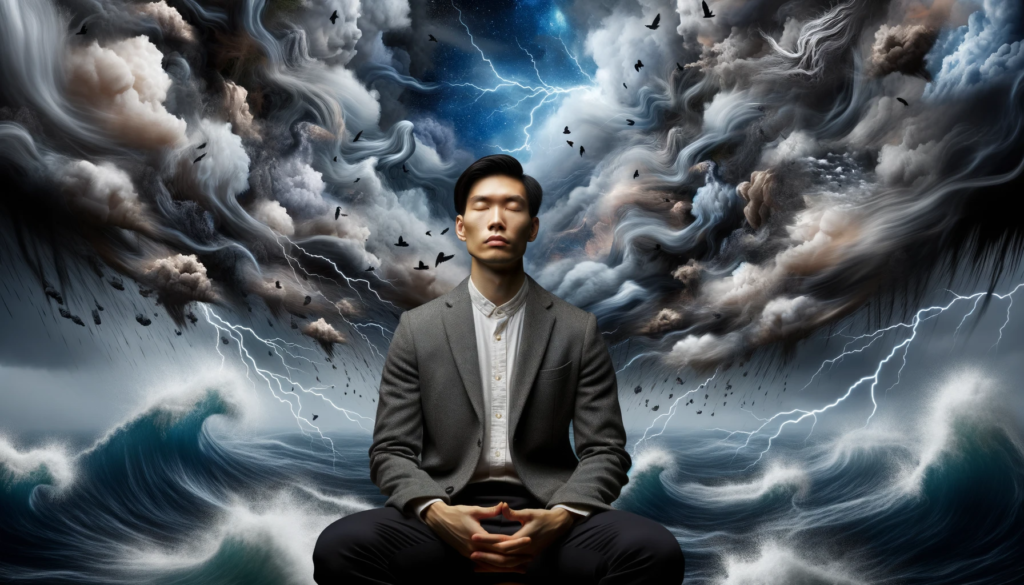
A. Understanding Anxiety and Its Triggers
Anxiety, often described as a whirlwind of worry, propels us into a sea of apprehension and unease. It’s not merely a mental state but a physical and emotional response that can cascade through our entire being. The triggers? They can be as varied as the individuals experiencing them, from work stress, social interactions, to unexpected life changes. Understanding these triggers becomes the first step in navigating through the stormy seas of anxiety, providing a foundation upon which coping mechanisms, like “Relaxation Techniques for Anxiety”, can be effectively built.
B. Why Does Relaxation Techniques Help Anxiety?
The question looms: why do relaxation techniques serve as a beacon of light in the tumult of anxiety? The answer lies in our body’s intrinsic fight-or-flight response. When anxiety strikes, our bodies become a battlefield, where relaxation techniques act as a mediator, quelling the internal turmoil and reinstating a semblance of peace. It’s about disarming the physiological responses, easing the mind, and providing a safe harbor amidst the tempest.
C. The Science Behind Stress and Relaxation
Peering into the science behind stress and relaxation unveils a fascinating interplay between our nervous system and mental state. Stress ignites a cascade of physiological responses, from heightened alertness to increased heart rate. Relaxation techniques, in contrast, activate the parasympathetic nervous system, often termed the “rest and digest” system. It’s a gentle reminder to our bodies that the threat has subsided, facilitating a return to a state of equilibrium and calm.
D. Benefits of Implementing Relaxation Techniques
Embracing relaxation techniques unfolds a myriad of benefits, transcending beyond the immediate alleviation of anxiety. It’s a journey towards enhanced mental clarity, improved sleep quality, and bolstered emotional well-being. Implementing these techniques becomes a shield, safeguarding us against the pervasive impacts of chronic anxiety and stress. It’s not merely a tool but a lifelong skill, empowering us to navigate through life’s uncertainties with resilience and poise.
Detailed Guide to 5 Relaxation Techniques for Anxiety
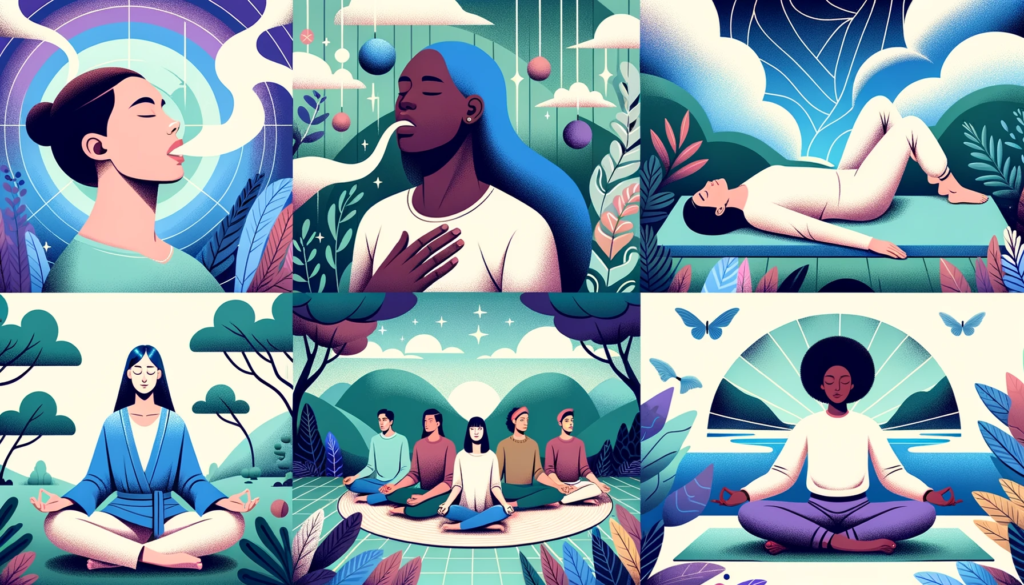
Navigating through the ebbs and flows of anxiety can often feel like a daunting journey. But, with the right tools in our arsenal, it becomes a journey of empowerment and self-discovery. Let’s delve into five “Relaxation Techniques for Anxiety” that promise not just a momentary respite, but a lifelong sanctuary for your mental well-being.
A. Technique 1: Mindful Breathing
Explanation and Steps
Breathing, an act so intrinsic to our existence, yet, how often do we truly pay attention to it? Mindful breathing invites us to immerse ourselves in the simplicity and profundity of our breaths, becoming acutely aware of each inhalation and exhalation.
Steps to Practice Mindful Breathing:
- Find a Quiet Space: Seek a tranquil environment where you can sit or lie down comfortably.
- Close Your Eyes: Gently close your eyes and turn your focus inward.
- Breathe Naturally: Without altering your breath, simply observe it.
- Focus on Your Breath: Pay attention to the journey of the breath through your nostrils, to your lungs, and its exit.
- Embrace the Calm: If your mind wanders, gently bring it back to your breath.
How it Helps with Anxiety
Mindful breathing serves as an anchor, grounding us amidst the turbulent seas of our anxious thoughts. It draws our attention away from apprehensive ruminations and centers it on the present moment. This act of anchoring not only provides immediate relief during anxious episodes but also cultivates a space of calm and focus within us.
B. Technique 2: Progressive Muscle Relaxation
Explanation and Steps
Progressive Muscle Relaxation (PMR), a technique that invites us to explore tension and release within our muscles, providing a physical and mental unwind that is profoundly calming. It’s a journey through each muscle group, tensing and then gradually releasing them to foster relaxation.
Steps to Practice Progressive Muscle Relaxation:
- Find Comfort: Choose a serene spot and make yourself comfortable, either seated or lying down.
- Begin with Breath: Take a few deep breaths, centering your attention on the present.
- Focus on a Muscle Group: Start with your toes or fingers, consciously tensing them.
- Hold and Release: Maintain the tension for a few moments, then gently release.
- Progress Gradually: Move through each muscle group, from your extremities inward, repeating the tense-release pattern.
Muscle Relaxation Techniques for Anxiety
PMR acts as a conduit between the physical and mental, allowing us to tangibly experience relaxation through our bodies. By intentionally tensing and then releasing muscles, we not only facilitate physical relaxation but also provide a metaphorical release of mental tension. The act of letting go, experienced physically, reverberates through our mental state, offering a respite from the persistent grip of anxiety.
C. Technique 3: Guided Imagery
Explanation and Steps
Guided Imagery, a technique that transports us to a realm of peace and tranquility through our imagination. It’s a mental escape, where calming, positive images replace the anxious narratives that often occupy our minds.
Steps to Engage in Guided Imagery:
- Choose Your Imagery: Decide on a scenario or environment that evokes peace and happiness.
- Close Your Eyes: Gently close your eyes, allowing your mental canvas to be painted with positive imagery.
- Engage Your Senses: Imagine the sounds, scents, and sensations of your peaceful place.
- Breathe and Be: Allow yourself to be immersed in this imagery, breathing deeply and embracing the calm.
Utilizing Free Relaxation Techniques for Anxiety Online
In our digital age, numerous online platforms offer free guided imagery sessions, enabling you to explore various scenarios and find one that resonates with you. From lush forests to serene beaches, these online resources can be a valuable tool in your relaxation toolkit, providing accessible and diverse options for anxiety management.
D. Technique 4: Yoga and Physical Exercise
Explanation and Steps
Yoga, a practice that intertwines the physical, mental, and spiritual, offers a sanctuary where our bodies and minds can converge in a state of tranquility. It’s not merely a physical exercise but a holistic approach to well-being that has been cherished across centuries.
Steps to Incorporate Yoga:
- Choose a Style: Select a yoga style that resonates with you, considering your physical capabilities and relaxation goals.
- Create a Space: Dedicate a calm and comfortable space for your practice.
- Begin with Basics: Start with basic poses, gradually progressing as you become more comfortable.
- Breathe Mindfully: Ensure your breaths are deep and synchronized with your movements.
- Embrace the Calm: Allow the serenity to permeate through you, lingering even after the practice.
Quick Relaxation Techniques for Anxiety through Yoga
Yoga, with its gentle poses and mindful breathing, offers a quick yet enduring escape from the clutches of anxiety. Even a brief session can usher in a wave of calm, providing a readily accessible tool to manage anxiety, especially in moments where time is of the essence.
E. Technique 5: Meditation and Mindfulness
Explanation and Steps
Meditation and mindfulness, practices that invite us to dwell in the present, free from the shackles of past regrets and future anxieties. It’s a practice of observing without judging, experiencing each moment in its purest form.
Steps to Practice Meditation:
- Find Your Spot: Choose a quiet and comfortable place where you can sit undisturbed.
- Focus on the Now: Bring your attention to the present moment, observing your thoughts without judgment.
- Breathe Deeply: Focus on your breath, allowing it to flow naturally and calmly.
- Gently Return: If your mind wanders, gently bring it back to your breath and the present moment.
Incorporating Mindfulness into Daily Routine
Mindfulness, a facet of meditation, can seamlessly weave into our daily routines. It’s about savoring each moment, whether it’s feeling the warmth of the sun, savoring the flavors of your meal, or simply being present in a conversation. It’s a subtle yet profound shift towards a more conscious and enriching existence.
Additional Resources and Support
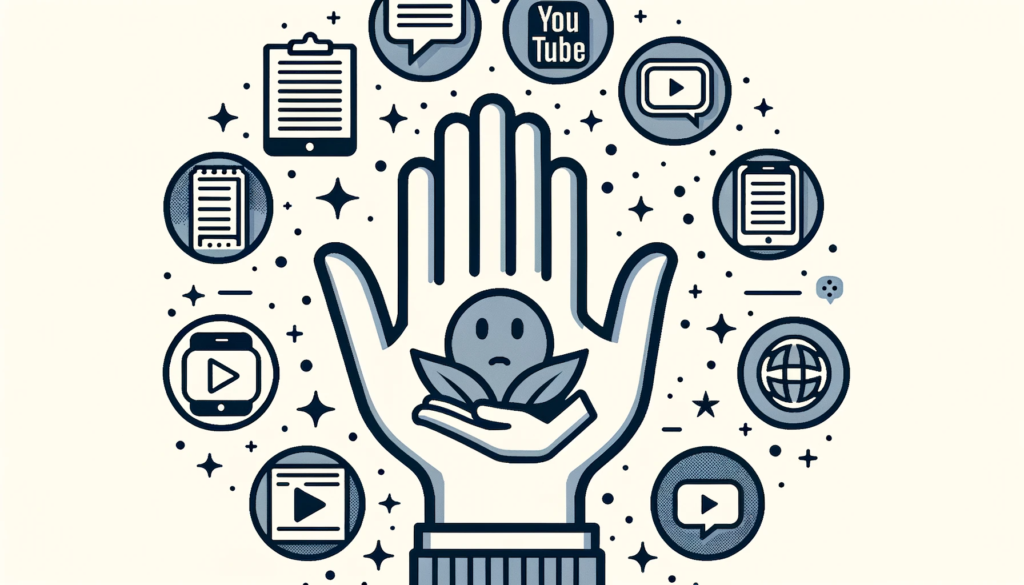
Embarking on a journey towards mental tranquility through “Relaxation Techniques for Anxiety” is a commendable step. But, the path towards serenity is often complemented by a myriad of resources and support systems that can further enhance your journey. Let’s explore some additional resources that can be your allies in navigating through the realms of anxiety and stress.
A. Relaxation Techniques for Anxiety PDF Resources
In the digital realm, numerous PDF resources offer structured guides and worksheets that can augment your relaxation practices. These resources often encapsulate varied techniques, providing a structured pathway to practice and understand them. From step-by-step guides on mindful breathing to detailed insights into progressive muscle relaxation, these PDFs can be your portable guides, offering support whenever and wherever you need it.
B. Utilizing YouTube: Relaxation Techniques for Anxiety YouTube Channels
YouTube, a treasure trove of visual content, hosts a plethora of channels dedicated to relaxation techniques. From guided meditations to yoga tutorials, these channels offer visual and auditory guidance, making the practices accessible and easy to follow. Engaging with these channels can not only provide visual insights into the techniques but also offer a virtual community of like-minded individuals, further enhancing your journey towards tranquility.
C. Finding Support and Professional Help
While self-help resources are invaluable, sometimes, the guidance of a professional becomes imperative. Therapists and counselors, with their expertise, can tailor relaxation techniques to suit your unique needs, providing a more personalized approach to managing anxiety. Moreover, support groups, both online and offline, offer a safe space to share experiences and gain insights from others navigating through similar journeys.
D. Apps and Online Platforms for Anxiety Management
In our technologically driven world, numerous apps and online platforms offer structured programs, guided sessions, and community support to manage anxiety. These platforms, accessible at your fingertips, provide a seamless integration of relaxation practices into your daily routine. From guided mindfulness sessions to structured relaxation programs, these platforms offer diverse resources to cater to varied preferences and needs.
Addressing Specific Scenarios
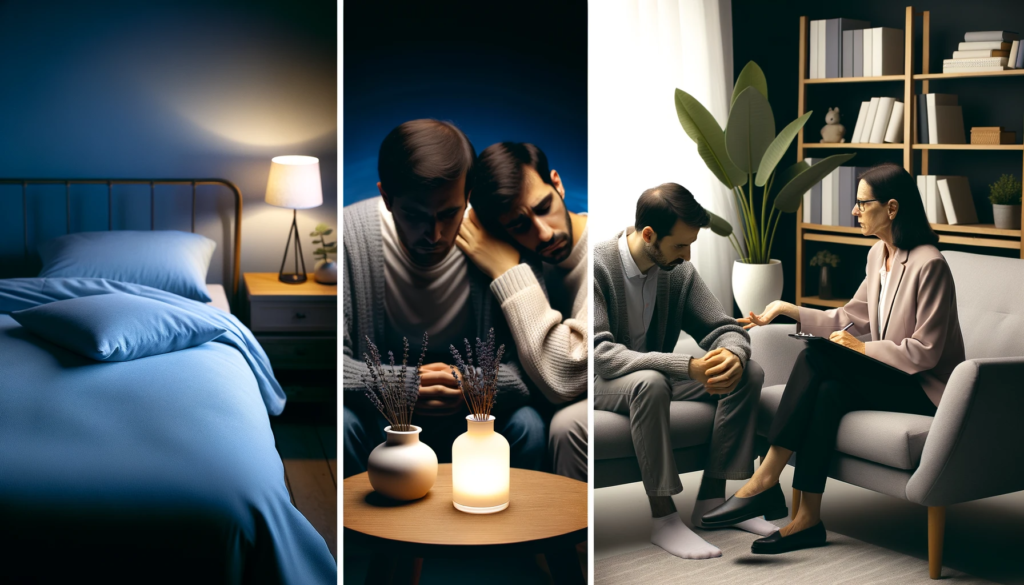
Navigating through the myriad of scenarios where anxiety and stress manifest, it becomes pivotal to tailor “Relaxation Techniques for Anxiety” to address specific situations effectively. Let’s delve into how these techniques can be adapted and implemented in various scenarios, providing a nuanced approach to managing anxiety and stress.
A. Relaxation Techniques for Sleep
Importance of Sleep in Managing Anxiety
Sleep, a sanctuary where our bodies and minds rejuvenate, plays a crucial role in managing anxiety. A restful night’s sleep not only replenishes our physical vitality but also provides a reset for our mental state, mitigating the intensity of anxiety.
Techniques to Enhance Sleep Quality
Implementing relaxation techniques like mindful breathing, guided imagery, and progressive muscle relaxation before bedtime can pave the way for improved sleep quality. These techniques foster a state of calm, facilitating a transition into a restful sleep, thereby acting as a bridge between the waking and sleeping states.
B. Relaxation Techniques for Stress
Differentiating Stress and Anxiety
While stress and anxiety often intertwine, distinguishing between them is vital. Stress, often a response to external pressures, may dissipate once the stressor is removed. Conversely, anxiety tends to linger, characterized by persistent worry even in the absence of a direct threat.
Tailoring Techniques for Stress Management
Adapting relaxation techniques like meditation and yoga for stress management involves focusing on immediate tension release. Engaging in these practices allows for a momentary pause, providing a buffer against the pressures of stressors and facilitating a return to equilibrium.
C. Relaxation Techniques in Psychology
Psychological Basis of Relaxation Techniques
Relaxation techniques are deeply rooted in psychological principles, acting as tools that enable individuals to shift from a state of heightened arousal to a state of calm. They provide a tangible means to access and influence the autonomic nervous system, thereby regulating stress and anxiety responses.
Incorporating Techniques into Therapy and Counseling
Incorporating relaxation techniques into therapy and counseling involves utilizing practices like mindful breathing and guided imagery as tools within therapeutic interventions. These techniques serve as adjuncts to therapy, providing clients with practical skills to manage anxiety outside of the therapeutic setting.
Frequently Asked Questions (FAQs)
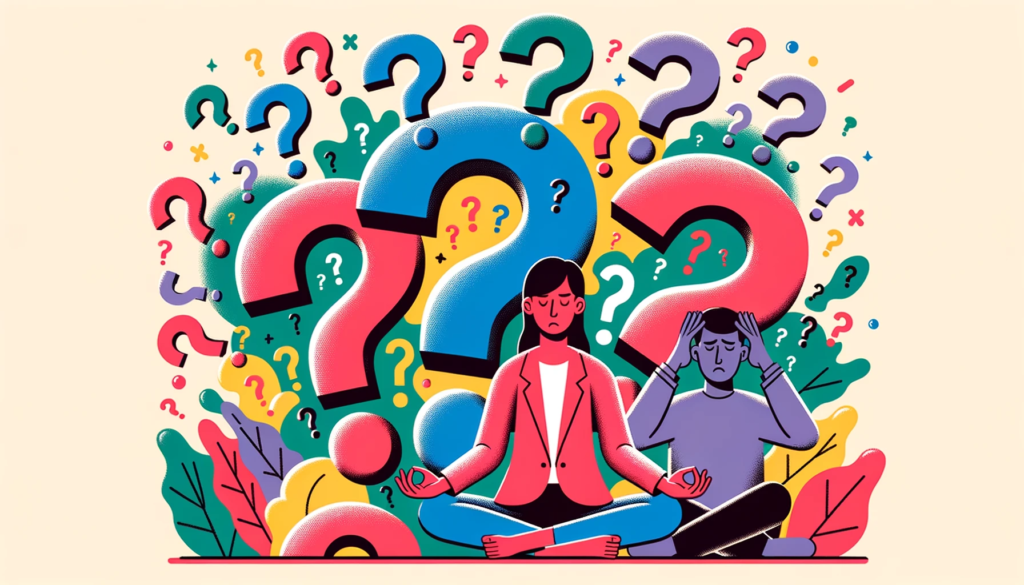
Embarking on a journey towards mental tranquility through “Relaxation Techniques for Anxiety” often brings forth numerous questions. Let’s delve into some frequently asked questions to provide clarity and enhance understanding of these techniques.
A. What is Stress Relaxation Techniques?
Stress relaxation techniques refer to a set of practices designed to alleviate physical and mental stress by promoting a state of relaxation and calm. These techniques, such as deep breathing, meditation, and progressive muscle relaxation, aim to shift the body from a state of stress to a state of relaxation, thereby reducing the physiological and psychological impact of stress. By focusing on calming the mind and body, these techniques facilitate a reduction in stress hormones, promote a sense of well-being, and enhance overall health.
B. Why Does Relaxation Techniques Help Anxiety?
Relaxation techniques help manage anxiety by mitigating the body’s stress response, thereby reducing feelings of fear, worry, and unease. When practiced consistently, these techniques, such as mindful breathing and guided imagery, can help regulate the body’s fight-or-flight response, which is often heightened during periods of anxiety. By fostering a state of relaxation, these techniques help to lower blood pressure, reduce cortisol levels, and promote a sense of balance and calm, providing a counterbalance to the physiological arousal caused by anxiety.
C. How to Implement Relaxation Techniques in Daily Life?
Implementing relaxation techniques in daily life involves integrating practices like meditation, deep breathing, and mindfulness into your routine. Begin by dedicating a specific time each day to practice these techniques. Create a tranquil environment, free from distractions, to enhance your practice. Utilize resources such as guided audio sessions, apps, or online platforms to assist you in practicing these techniques effectively. Moreover, incorporating micro-practices, such as taking a few deep breaths or engaging in brief mindfulness exercises during moments of stress, can also be beneficial in managing anxiety throughout the day.
D. Can Relaxation Techniques Replace Professional Help?
While relaxation techniques are a valuable tool in managing stress and anxiety, they should not replace professional help, especially in cases of chronic or severe anxiety. These techniques can be utilized as a complementary approach alongside professional therapy and counseling. Mental health professionals can provide a comprehensive treatment plan, which may include relaxation techniques, psychotherapy, and possibly medication, to effectively manage anxiety. Always consult with a healthcare professional to determine the most appropriate and effective approach to managing mental health.
Conclusion

Navigating through the myriad of emotions and physical sensations that accompany anxiety can often feel like an insurmountable journey. However, as we’ve explored, employing “Relaxation Techniques for Anxiety” offers a tangible and accessible pathway towards managing these experiences, fostering a sense of calm and equilibrium in our daily lives.
Summarizing Key Points
Throughout this guide, we’ve delved into various relaxation techniques, each offering unique benefits and approaches towards managing anxiety and stress. From the mindful practice of breathing and the physical engagement of progressive muscle relaxation to the serene escape offered by guided imagery, each technique provides a tool, enabling us to navigate through moments of anxiety with a sense of control and agency.
Consistency is the key to unlocking the full potential of these techniques. Integrating them into your daily routine, even during moments of calm, will enhance their efficacy during times of stress and anxiety. It’s not merely a practice but a journey towards cultivating a mindful and tranquil existence amidst the chaos of our external environments.
Your journey is uniquely yours, and we invite you to share your experiences, challenges, and triumphs as you explore these relaxation techniques. Which technique resonated with you the most? Have you discovered new insights about your relationship with anxiety and stress? Your stories provide invaluable insights and foster a sense of community and support amongst readers navigating similar paths.
